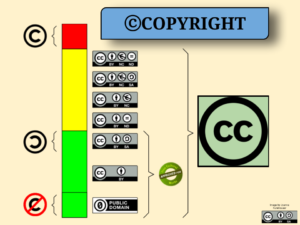Have you ever thought that you might not know everything about digital citizenship? If you are like me, you probably have done it at least once. Well, it seems that we are right. Let’s start by understanding the complexity of the concept. There are several definitions of digital citizenship, but I am going to present mine, it goes like this:
“A set of ethical code guidelines that help people interact and communicate with others via digital tools. It establishes the appropriate use of digital resources and strategies to keep digital citizens safe.”
All definitions for digital citizenship are somewhat abstract and understanding them requires its translation into a language more precise that includes quick and clear examples that can be visualized (Polgar & Curran, 2015). To explain the significance of digital citizenship, I will use the nine elements identified by Mike Ribble (2015).

Icons made by Freepik from www.flaticon.com
These elements were identified as a way of understanding the intricacy of digital citizenship and the issues with technology abuse and misuse. They can be considered the foundation of a responsible Digital Society.
The nine elements are the following:
Element 1: Digital access. Citizens have access to the digital society in which the ability and possibility of participating is equivalent.
Issues:
• Lack of computers at home or an adequate network to use them.
• Inexistence of programs to increase access outside of school.
Element 2: Digital Commerce. Citizens know how to buy and sell goods and how to protect themselves while doing these transactions.
Issues:
• Lack of citizen preparation to interact safely in a digital economy.
• Citizens not being aware of the problems associated with digitally buying services or products from insecure sites. For example, identity theft.
Element 3: Digital communication. Citizens know the various ways to communicate and how to use them appropriately.
Issues:
• Excessive and irresponsible sharing of thoughts, pictures, and information through social media or any communication media, and their adverse consequences.
• Urge to stay communicated 100% of the time without regards to how it would affect others.
• Use of digital communication to engage in activities like bullying, academic dishonesty, sexting, etc.
Element 4: Digital literacy. Citizens have the opportunity to learn about technology and its uses.
Issues:
• Teachers lack continuous training related to how to implement technology to their specific content area.
• For students, learning with technology does not include the appropriate and inappropriate use of said technology.
Element 5: Digital etiquette. Citizens recognize and use acceptable online behavior and conduct when interacting with others.
Issues:
• Lack of respect and responsibility from users that continue to communicate with others at inappropriate times.
• Deficiency in character education and empathy to consider how their use of technology affect others.
Element 6: Digital law. Citizens are responsible for their actions when using technology.
Issues:
• Use of copyrighted materials without the consent of the author or without paying for it.
• Citizens using their knowledge of coding and scripting to do illegal activities like hacking, piracy, software or file sharing, etc.
Element 7: Digital rights and responsibilities. Citizens understand how to protect the rights of others and defend their your own.
Issues:
• Reporting inappropriate conducts like cyberbullying and threats.
• Unethical use of online materials, the absence of proper citation and attribution to authors.
Element 8: Digital health and wellness. Citizens understand the physical or psychological risks when using technology.
Issues:
• Unawareness of the dangers of excessive and improper use of technology. For example, incorrect ergonomics, repetitive motion injuries, addiction, etc.
Elements 9: Digital security. Citizens know how to protect their information and data as well as others’.
Issues:
• Ignorance of how citizens can protect their equipment from harm and sensitive information from falling in the wrong hands. Identity theft, phishing, hackers among other dangers.
Teaching digital citizenship through the nine elements

Icons made by Freepik from www.flaticon.com
As technology continues to change and new tools emerge instead of trying to set up a set of rules that will quickly become obsolete, is better to identify the issues and guide users in this continuously changing digital world.
Ribble (2015) suggests teaching digital citizenship using the principles of respect, educate and protect (REP), and organizes the nine elements as follows:
1.Respect yourself and others
Etiquette
Access
Law
2.Educate yourself and others
Literacy
Communication
Commerce
3.Protect yourself and others
Rights and responsibilities
Security
Health and wellness
The teaching of digital citizenship is done through repetitions; one element of each principle form each REP and are included in the school curriculum throughout the school year in the form of discussion and practice.
Based on its priorities, the school or district will emphasize specific elements. Technology leaders need to be attentive to new uses of technology, be constantly aware that what was not a reason of concern before could become an issue later and understand that although some elements may not be priorities, they still have to be identified and understood.
Resources for teachers
Common sense education on digital citizenship. Everything educators need to empower the next generation of digital citizens.
Digizen website. Provides information for educators, parents, caregivers, and young people. It is used to strengthen their awareness and understanding of what digital citizenship is, encouraging users to become responsible DIGItal citiZENS.
Mike Ribble’s Digital Citizenship website. Provides resources to use technology appropriately.
Google’s Be Internet Awesome website. Includes resources to help kids be safe, confident explorers of the online world.
Edutopia’s “Digital Citizenship: Resource Roundup.” A collection of articles, videos, and other resources on internet safety, cyberbullying, digital responsibility, and media and digital literacy.
References
Polgar, D. R., & Curran, M. B.F.X. (2015). We shouldn’t assume people know what digital citizenship is. Retrieved from http://www.teachthought.com/technology/we-shouldnt-assume-people-know-what-digital-citizenship-is/
Ribble, M. (2015). Digital citizenship in schools: Nine elements all students should know. (3rd ed.). Eugene, OR: International Society for Technology.




